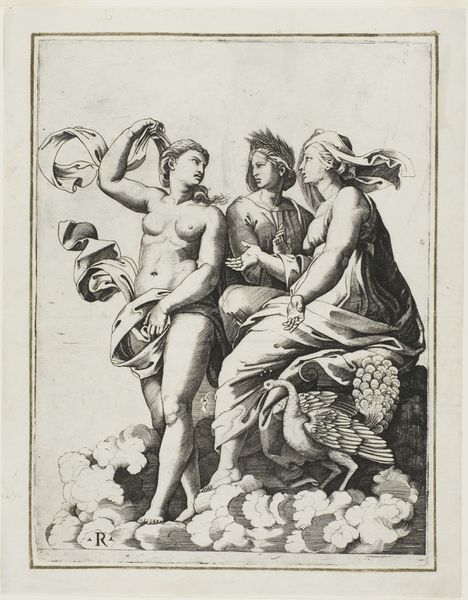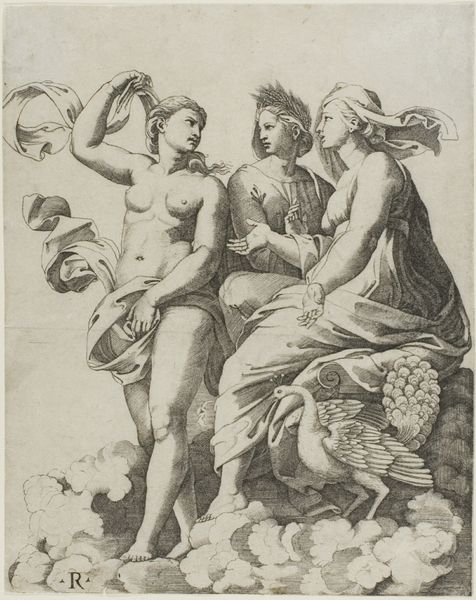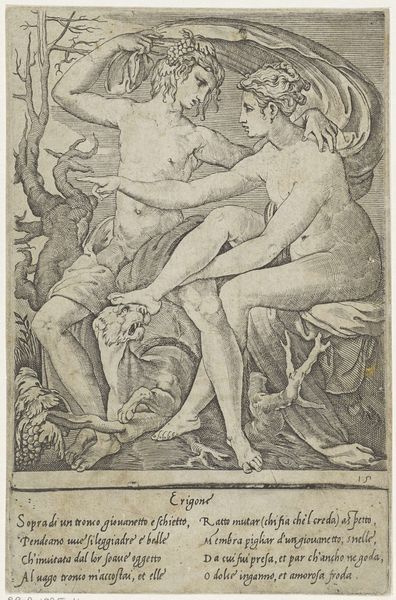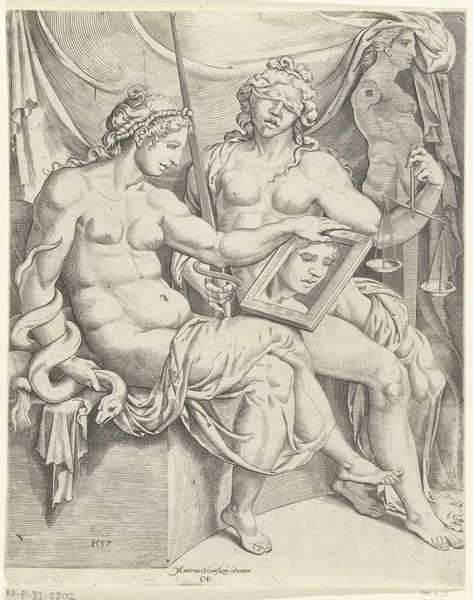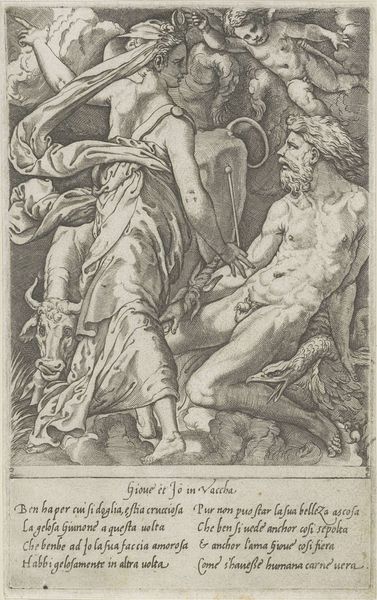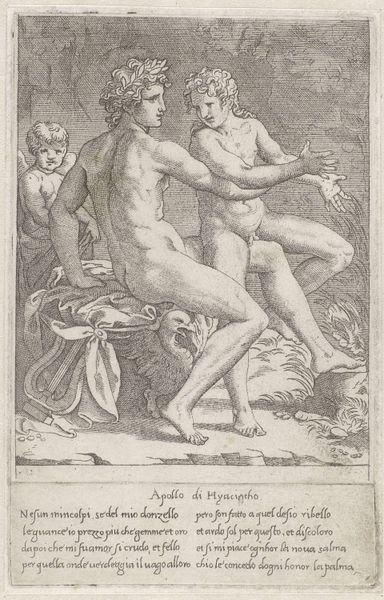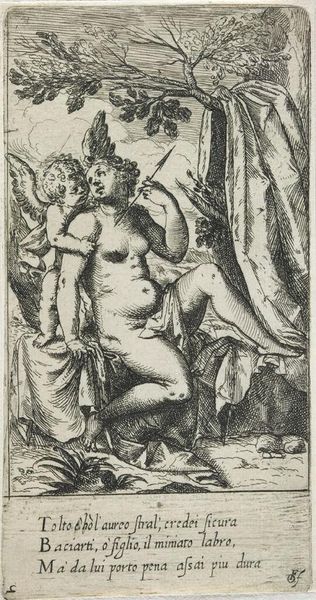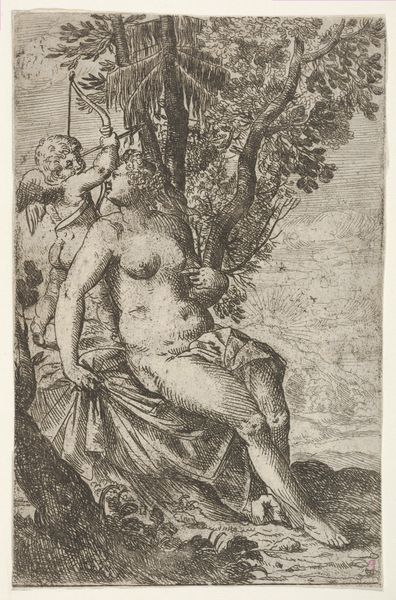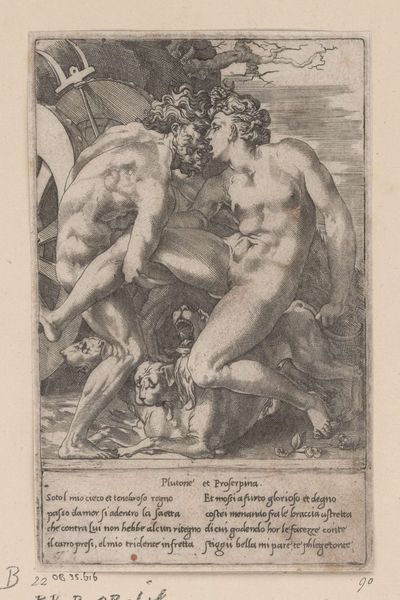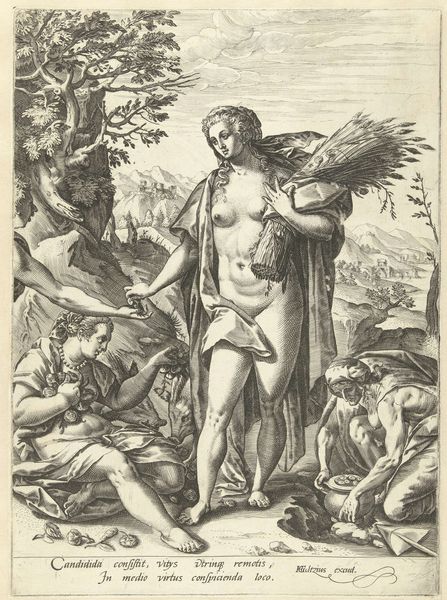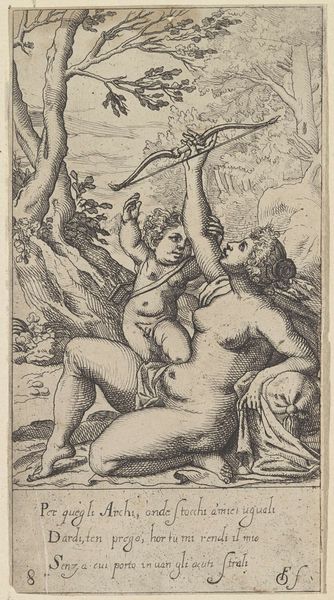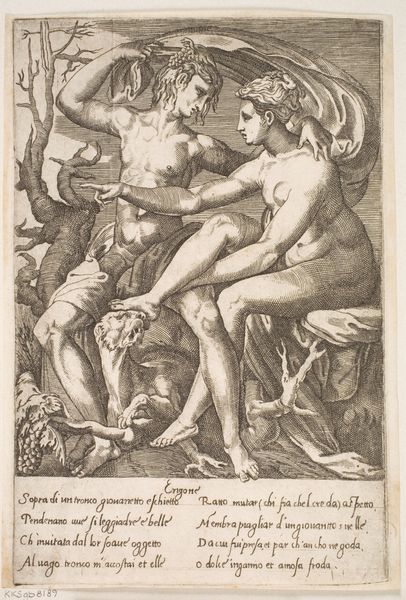
engraving
#
figuration
#
line
#
history-painting
#
italian-renaissance
#
engraving
Dimensions: height 223 mm, width 197 mm
Copyright: Rijks Museum: Open Domain
Curator: What strikes me immediately is the composition, almost a classical frieze, and rendered with incredible line work. The engraving presents three figures posed amidst clouds. Editor: It feels remarkably serene for a depiction involving goddesses, actually. Considering this piece, "Juno, Ceres, and Psyche," was realized between 1510 and 1527 by Marco Dente, I'm curious, what can you tell me about its placement within its historical context? Curator: The visual vocabulary clearly owes a debt to the High Renaissance, think of Raphael. Look closely, and note the exquisite detail and balance achieved purely through the artful manipulation of line. Each figure’s posture and drapery are meticulously considered. Editor: Considering the era, the decision to represent these mythological figures in such a classical manner underscores the period’s renewed interest in antiquity. The print also speaks to the socio-cultural environment in which printmaking gained traction. Prints were tools for disseminating classical knowledge, almost like Renaissance "social media." Curator: Semiotically speaking, beyond the technical prowess, we're seeing an orchestrated convergence of iconographic elements. The positioning, gestures and interrelation of these three figures convey layers of meaning. Ceres is readily identified by the wheat wreath and cornucopia behind her peacock, as symbols of earth and prosperity. Editor: Precisely. The imagery surrounding each goddess situates them within established mythological roles. Yet, these choices would impact the broader culture, standardizing interpretations of Juno, Ceres and Psyche. By producing the engravings, it facilitated a form of cultural standardization through easily replicable images. Curator: It's the pure, unadulterated play of light and shadow across the bodies that captivates. The tonality seems entirely secondary to that masterful use of hatching and cross-hatching to shape our forms. Editor: A stark aesthetic decision reflecting the era's fascination with form and philosophical ideals regarding beauty as connected to higher intellectual insight. It also prompts thoughts about access and distribution as crucial socio-historical elements in Renaissance society. Curator: So much can be unraveled with a deep viewing and understanding of linear structure, compositional devices and sheer technical finesse within art. Editor: Yes, indeed. Understanding prints like this means unpacking both artistic intentions and historical and cultural reception as deeply intertwined, with both impacting societies.
Comments
No comments
Be the first to comment and join the conversation on the ultimate creative platform.

